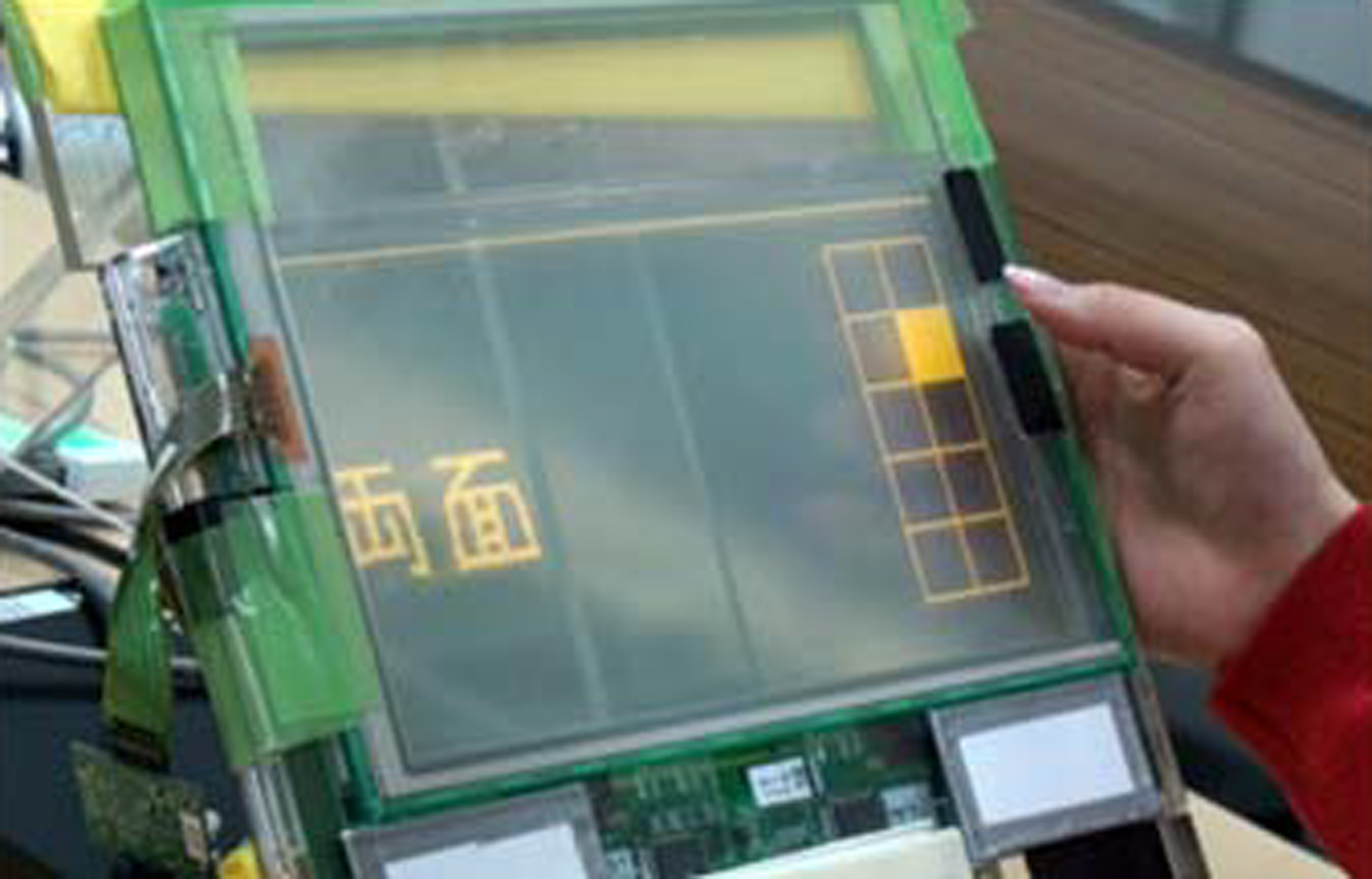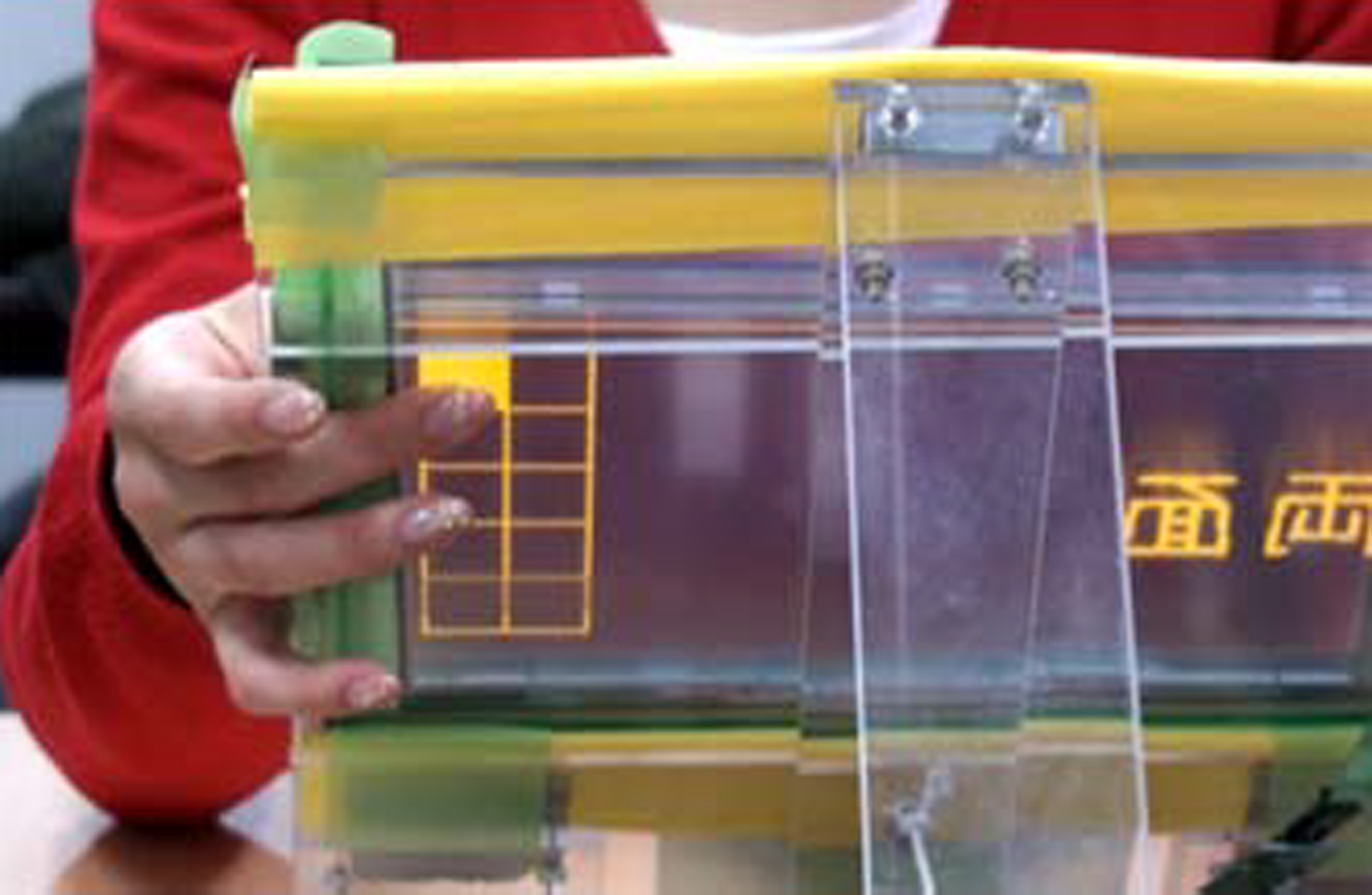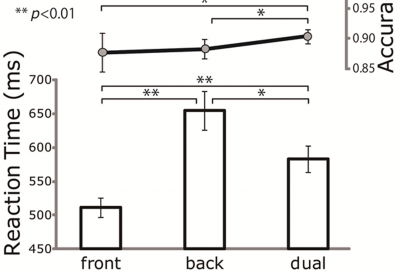“Comparison of front touch and back touch while using transparent double-sided touch display” by Ohtani, Hashida, Kakehi and Naemura
Conference:
Type(s):
Title:
- Comparison of front touch and back touch while using transparent double-sided touch display
Presenter(s)/Author(s):
Abstract:
When using direct-touch displays, the users’ fingers sometimes occlude the content. To avoid this problem, previous studies have proposed using the back side of a device [Hiraoka et. al., 2003] [Wigdor et al., 2007]. These approaches were shown to be useful for inputting from the backside of a device, for tasks such as selecting targets. Although these approaches have not been shown the usability of double sided touch displays, we explored how users touch both sides of a transparent display using the LimpiDual Touch (LDT) [Iwabuchi et al., 2008]. In our experiments, participants touched a target on the double-sided display. The location of the target was not predictable. We compared the reaction time (RT) and accuracy under the different input conditions (front/back/dual).
References:
1. Hiraoka, S., Miyamoto, K., and Tomimatsu. I. 2003. Behind Touch, a Text input method for mobile phone by the back and tactile sense interface, Information Processing Society of Japan, Interaction’03, 131–138.
2. Wigdor, D., Forlines, C., Baudisch, P., Barnwell, J., and Shen, C. 2007. LucidTouch: A See-Through Mobile Device. In Proc. UIST’07, ACM, 269–278.
3. Iwabuchi, M., Kakehi, Y., and Naemura, T. 2008. LimpiDual Touch: Interactive Limpid Display with Dual-Sided Touch Sensing. In SIGGRAPH’08, ACM, posters.







